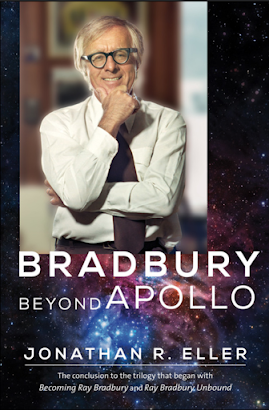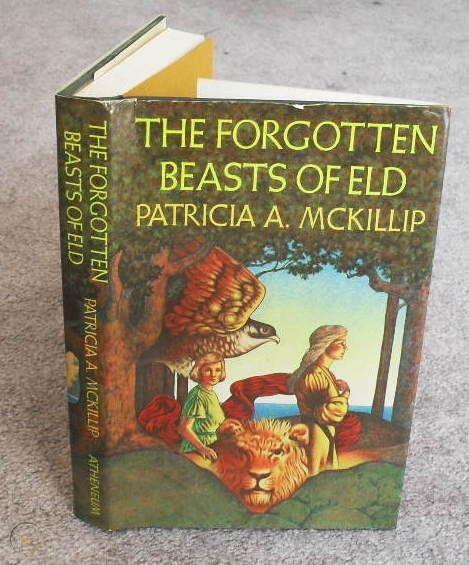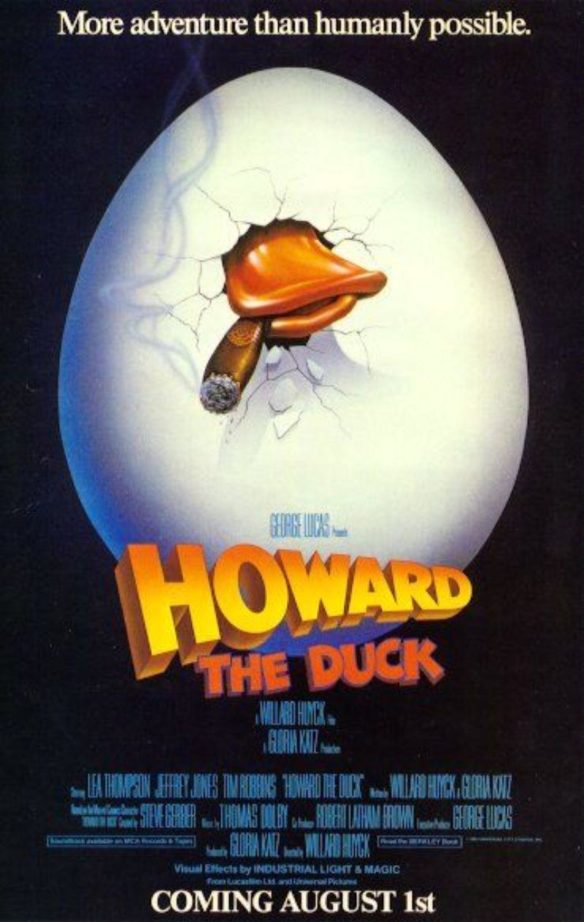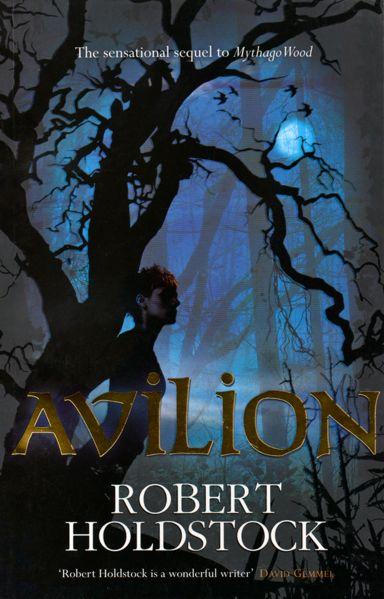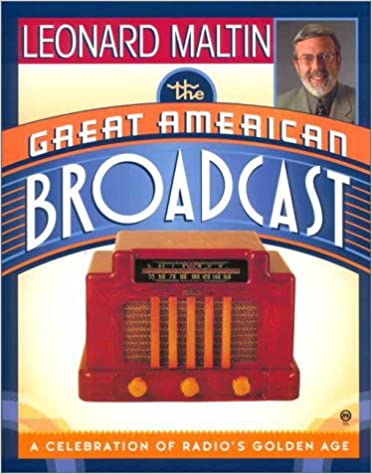(1) SPACE OPERATORS ARE STANDING BY. The virtual Tucson Festival of Books will include a panel “Galactic Empires, Murderbots and More!” with Tochi Onyebuchi, John Scalzi, and Martha Wells on Saturday March 6 at 11:00 a.m. Mountain time. Registration info here.

(2) GUEST WHO? “Star Trek: The Next Generation Almost Featured Robin Williams” at CBR.com.
…One actor the show never snagged, however, was Robin Williams, despite the fact that an episode was written specifically for him and the actor’s passion for the series.
The episode written for Robin Williams was Season 5, Episode 9, “A Matter of Time.” The episode focuses on the time-traveler Berlinghoff Rasmussen, a 26th century historian who traveled back in time to observe Picard and the crew of the Enterprise during a crucial moment. Except Rasmussen didn’t come from the future — he came from the past. He had stolen his time machine and was visiting The Next Generation‘s 24th century in order to steal as much technology as he could and become rich back in his own time….
(3) THE WONDER OF THUNDER. Netflix dropped a trailer for Thunder Force, a superhero comedy with Melissa McCarthy and Octavia Spencer.
(4) HARD SF LAUGHS. “Weir(d) Science: PW Talks with Andy Weir” is a Q&A at Publishers Weekly about the author’s neaw book Project Hail Mary.
How did you decide on the level of humor?
I’m a smartass myself, so smartass comments come naturally to me. For me, humor is like the secret weapon of exposition. If you make exposition funny, the reader will forgive any amount of it. And in science fiction—especially with my self-imposed restriction that I want to be as scientifically accurate as possible—you end up spending a lot of time doing exposition.
(5) FIRST STEP INTO SPACE. In the “ESA – Parastronaut feasibility project”, the European Space Agency will try to develop people with physical disabilities as astronauts. (Click for larger image.)
For the first time in over a decade, ESA is looking for new astronauts. These recruits will work alongside ESA’s existing astronauts as Europe enters a new era of space exploration.
In a first for ESA and human spaceflight worldwide, ESA is looking for individual(s) who are psychologically, cognitively, technically and professionally qualified to be an astronaut, but have a physical disability that would normally prevent them from being selected due to the requirements imposed by the use of current space hardware.
ESA is ready to invest in defining the necessary adaptations of space hardware in an effort to enable these otherwise excellently qualified professionals to serve as professional crew members on a safe and useful space mission.
… Because we believe that exploration is the matter of a collective effort, we need to extend the pool of talents we can rely on in order to continue progressing in our endeavour. One effective way of doing this is to include more gifted people of different genders, ages and backgrounds, but also people with special needs, people living with physical disabilities.
Right now we are at step zero. The door is closed to persons with disabilities. With this pilot project we have the ambition to open this door and make a leap, to go from zero to one.
…There are many unknowns ahead of us, the only promise we can make today is one of a serious, dedicated and honest attempt to clear the path to space for a professional astronaut with disability.
(6) AN INCREDIBLE CAREER. Sunday Profile: LeVar Burton on YouTube is an interview of Burton (he’s now a grandfather!) by Mo Rocca that aired on CBS Sunday Morning on February 28.
(7) #ILOOKLIKEANENGINEER . S.B. Divya, in “Hard Science Fiction Is Still Overwhelmingly White—But It’s Getting Better” at CrimeReads, says hard sf is becoming more welcoming to women and people of color as engineering and technology become more diverse professions.
…I didn’t start my adult life as a writer. First, I wanted to be a scientist. I went to Caltech to major in astrophysics, got sideswiped by computational neuroscience, and ended up working in electrical and computer engineering. From the moment I set foot on the Caltech campus, to the most recent tech job I held, I found myself and my fellow female engineers vastly outnumbered by our male cohort. Over almost 25 years in the industry, I have not seen these ratios improve. If anything, they’re getting worse.
The same phenomenon appears in so-called “hard science fiction,” which is another label that people attach to Michael Crichton’s novels. This subgenre encompasses stories whose speculative science and technology elements do not put a strain on credibility. (In contrast, see any fiction involving faster-than-light spacecraft, anti-gravity, or time travel.) Here, too, is a domain whose bestsellers are dominated by white men.
We live in the year 2021, and yet we persist in associating certain jobs—and certain types of stories—with specific groups of people. Engineers are Asian; startup CEOs are white. School teachers are women, and academics are men. Unfortunately, many times the statistics bear these out in reality, too. Why do we struggle to break free of these narratives and associations? Because we have so few counterexamples that are publicized. It’s not that they don’t exist, but they do not permeate our popular consciousness. It takes effort to overcome these associations, whether you fit in the stereotyped demographic or not. Without that struggle, the associations become self-fulling prophecies.
(8) ECHO WIFE NEWS. Sarah Gailey’s new book has been optioned – Deadline has the story: “Annapurna To Adapt Sarah Gailey’s Novel ‘The Echo Wife’ For Film”.
After a competitive situation, Annapurna has successfully optioned the rights to bestselling author Sarah Gailey’s most recent novel The Echo Wife and is adapting the book as a feature film.
Gailey will executive produce the project alongside Annapurna….
Hugo Award-winning and bestselling author Gailey is an internationally published writer of fiction and nonfiction. Gailey’s nonfiction has been published by Mashable and The Boston Globe, and won a Hugo Award for Best Fan Writer. Gailey’s fiction credits also include Vice and The Atlantic. The author’s debut novella, River of Teeth, was a 2018 finalist for both the Hugo and Nebula Awards. Their bestselling adult novel debut, Magic For Liars, published in 2019.
The Echo Wife was published on Feb. 16 by Tor Books, the science fiction and fantasy division of Macmillan Publishers….
(9) MEDIA BIRTHDAY.
- March 4, 1977 — On this day in 1977, Man From Atlantis premiered. Created by Mayo Simon and Herbert Solow, the pilot was written by Leo Katzin. It starred Patrick Duffy, Belinda Montgomery, Alan Fudge and Victor Bruno. It ran for thirteen episodes that followed four TV movies. It was not renewed for a full season. We cannot offer you a look at it as it’s behind a paywall at YouTube.
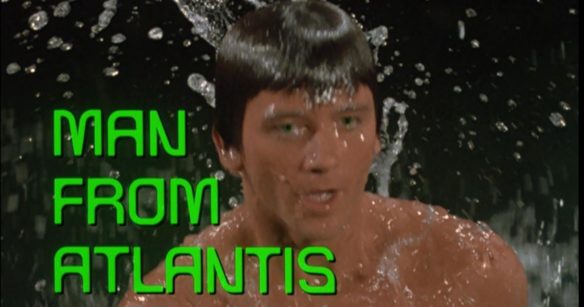
(10) TODAY’S BIRTHDAYS.
[Compiled by Cat Eldridge and John Hertz.]
- Born March 4, 1923 — Sir Patrick Alfred Caldwell-Moore CBE HonFRS FRAS. Astronomer who liked Trek and Who early on but said later that he stopped watching when “they went PC – making women commanders.” Despite that, he’s here because he shows up in the debut Eleventh Doctor story, “The Eleventh Hour“. And he was also in the radio version of the Hitchhiker’s Guide to the Galaxy as well. (Died 2012.) (CE)
- Born March 4, 1933 – Bernie Zuber. Original vice-president of the Mythopoeic Society. Early editor of Mythlore. Founded the Tolkien Fellowships, edited The Westmarch Chronicle. Guest of Mythcon XIII. Active in local (Los Angeles) fandom. (Died 2005) [JH]
- Born March 4, 1938 — Gary Gygax. Game designer and author best known for co-creating Dungeons & Dragons with Dave Arneson. In addition to the almost beyond counting gaming modules he wrote, he wrote the Greyhawk Adventure series and the Dangerous Journeys novels, none of which is currently in print. (Died 2008.) (CE)
- Born March 4, 1952 – Richard Stevenson, age 69. College English teacher of Canada, has also taught in Nigeria, musician with Sasquatch and Naked Ear. A score of poetry books, memoir Riding on a Magpie Riff. Six dozen poems for us. Stephansson Award (Writers Guild of Alberta). Has published haiku, senryu (two Japanese short-poetry forms, unrhymed 5-7-5-syllable lines), tanka (Japanese short-poetry form, unrhymed 5-7-5-7-7-syllable lines). [JH]
- Born March 4, 1954 — Catherine Anne O’Hara, 67. First genre role role was in the most excellent Beetlejuice filmas artist Delia Deetz followed by being Texie Garcia in Dick Tracy, a film I’ll be damn if I know what I think about. She voices most excellently Sally / Shock bringing her fully to, errr, life in The Nightmare Before Christmas. I see she’s in Lemony Snicket’s A Series of Unfortunate Events as Justice Strauss. Lastly, and no this is by no means a complete listing of what she has done, she was on Netflix’s A Series of Unfortunate Events as Dr. Georgina Orwell. (CE)
- Born March 4, 1965 — Paul W. S. Anderson, 55. If there be modern pulp films, he’s the director of them. He’s responsible for the Resident Evil franchise plus Event Horizon, Alien V. Predator, Pandorum and even Monster Hunter which no, isn’t based off the work of a certain Sad Puppy. (CE)
- Born March 4, 1966 — Paul Malmont, 55. Author of the comic strips, The Chinatown Death Cloud Peril and Jack London in Paradise which blends pulp tropes and SF elements including using as protagonists Heinlein and Asimov. He wrote the first four issues of DC Comics’ Doc Savage series with artist Howard Porter. (CE)
- Born March 4, 1969 – Sarah Bernard, age 52. Half a dozen books for us. Did her own cover for this one. Has read a Complete Sherlock Holmes, three by Julian May, a dozen by Anne McCaffrey. [JH]
- Born March 4, 1973 – Marco Zaffino, age 48. Author, filmmaker, musician; some for us e.g. Pure Bred Chihuahua. Things can be unclear at borders (perhaps why those bookshops closed); see this Website. These Sentries might be ours. [JH]
- Born March 4, 1973 — Len Wiseman, 48. Producer or Director on the Underworld franchise. Also involved in Stargate, Independence Day, Men in Black and Godzilla in the Property Department. Sleepy Hollow series creator and producer for much of it, wrote pilot as well. Producer for much of the Lucifer seriesas well and is the producer for the entire series of Swamp Thing. Also produced The Gifted. (CE)
- Born March 4, 1982 – Maggie Lehrman, age 39. One novel for us; another outside our field, reviewed by Kirkus as “An earnest high school romp” which I guess leaves ML feeling as I did when someone – who as I’ve said is still my friend – described me as an earnest man in a propeller beanie, I mean what do you want? Anyway, Website here. [JH]
- Born March 4, 1982 – Lauren Miller, age 39. Two novels for us, one other; now working on another as L. McBrayer. She says “writing and seeing and being. I have come to believe that there is magic to be found if we can learn to do all three at the same time.” [JH]
(11) COMICS SECTION.
- Carpe Diem has a little retired astronaut humor.
(12) SEUSS ON THE LOOSE. The New York Times’ coverage — “Dr. Seuss Books Are Pulled, and a ‘Cancel Culture’ Controversy Erupts” – includes these interesting sales figures.
…Classic children’s books are perennial best sellers and an important revenue stream for publishers. Last year, more than 338,000 copies of “Green Eggs and Ham” were sold across the United States, according to NPD BookScan, which tracks the sale of physical books at most retailers. “One Fish Two Fish Red Fish Blue Fish” sold more than 311,000 copies, and “Oh, the Places You’ll Go!” — always popular as a high school graduation gift — sold more than 513,000 copies.
“And to Think That I Saw It on Mulberry Street,” one of the six books pulled by the estate, sold about 5,000 copies last year, according to BookScan. “McElligot’s Pool” and “The Cat’s Quizzer” haven’t sold in years through the retailers BookScan tracks. Putting the merits of the books aside, removing “Green Eggs and Ham” would be a completely different business proposition from doing away with new printings of “McElligot’s Pool.” (Though the news that the books would be pulled caused a burst of demand, and copies of “Mulberry Street” were listed on eBay and Amazon for hundreds or thousands of dollars on Wednesday.)
(13) MISSION UNPOSSIBLE. Science Fiction 101 is a new podcast by Phil Nichols and Colin Kuskie: “It’s Alive: Science Fiction 101 first episode!” Their first mission, should they choose to accept it, is to define the term!
In this debut episode, your friendly hosts Phil Nichols and Colin Kuskie first attempt to define “science fiction”. If you want to know more about this thorny subject, check out Wikipedia’s attempt to do the very same thing. Or, for a more in-depth discussion, check out what the Encyclopedia of Science Fiction has to say on the subject.
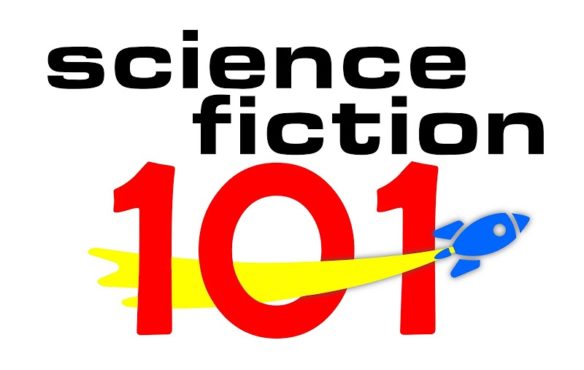

(14) PIECES OF EIGHT. The latest episode of Octothorpe is now available – “26: I’m Not Even a Single-Tasker”
John [Coxon] is an annoying prick, Alison [Scott] is not sure she’s staying sane, and Liz [Batty] is going to a beach. We discuss all the news from Eastercon, going to Picocon, and then look back on Punctuation before staying sane in the apocalypse.
(15) NOT ULTRAVIOLENCE BUT HYPERVIOLENCE. In the Washington Post, Michael Cavna interviews Keanu Reeves, who co-created with Matt Kindt and artist Ron Garney BRZRKR, a 12-issue comic published by Boom! Studios. “Keanu Reeves on the joy of writing his first comic book: ‘Why not? That sounds amazing!’”
… To dramatize this “Highlander”-meets-“Logan” fighter during the Boom! introductions, Reeves stood and acted out potential scenes, even flashing some fighting moves — pitch meeting as full-body immersion. The approach was similar to when Reeves first met with Pixar for “Toy Story 4,” striking action poses to play Duke Caboom. “I’ll get in touch with a feeling or thought — or a feeling-thought,” says the bearded Reeves, wearing a black Levi’s jacket and starkly backdropped by a near-white wall — Zoom room as Zen room. “I’ll express it and it tends to come out through the filter of the character.”
“BRZRKR” opens with maximum carnage and minimal verbiage. The creative team promises more textured themes are on the horizon. Discussing the comic’s scope, Reeves riffs until he’s in full mellifluous monologue: “We do want to take on morality, ethics, peacetime, war, violence, whose side, what’s right, what’s wrong, truth, fiction, memory, what do we believe in, who are we, with not only violence but also love — and then our own identities and who we are as humans.” Whoa.
(16) STARSHIP EXPLODES AFTER LANDING. “SpaceX Starship appears to ace touchdown, then explodes in Texas test flight” – KTLA has the story.
SpaceX’s futuristic Starship looked like it aced a touchdown Wednesday, but then exploded on the landing pad with so much force that it was hurled into the air.
The failure occurred just minutes after SpaceX declared success. Two previous test flights crash-landed in fireballs.
The full-scale prototype of Elon Musk’s envisioned Mars ship soared more than 6 miles after lifting off from the southern tip of Texas on Wednesday. It descended horizontally over the Gulf of Mexico and then flipped upright just in time to land.
The shiny bullet-shaped rocketship remained intact this time at touchdown, prompting SpaceX commentator John Insprucker to declare, “third time’s a charm as the saying goes” before SpaceX ended its webcast of the test.
But then the Starship exploded and was tossed in the air, before slamming down into the ground in flames.
(17) BY THE SEA. You can read the introductory paragraphs to an article about mermaids here — “Splash by Marina Warner – the rest of the article is behind a paywall at the New York Review of Books.
In l819 the French inventor Cagniard de La Tour gave the name sirène to the alarm he had devised to help evacuate factories and mines in case of accident—in those days all too frequent. The siren, or mermaid, came to his mind as a portent, a signal of danger, although it might seem a contradiction, since the sirens’ song was fatal to mortals: in the famous scene in the Odyssey, Odysseus ties himself to the ship’s mast to hear it, and orders his men to plug their ears with wax and ignore him when he pleads to be set free to join the singers on the shore. Homer does not describe these irresistible singers’ appearance—only their flowery meadow, which is strewn with the rotting corpses of their victims—but he tells us that their song promises omniscience: “We know whatever happens anywhere on earth.” This prescience inspired Cagniard: he inverted the sirens’ connection to fatality to name a device that gives forewarning.
In Greek iconography, the sirens are bird-bodied, and aren’t instantly seductive in appearance but rather, according to the historian Vaughn Scribner in Merpeople, “hideous beasts.” A famous fifth-century-BCE pot in the British Museum shows Odysseus standing stiffly lashed to the mast, head tilted skyward, his crew plying the oars while these bird-women perch around them, as if stalking their prey: one of them is dive-bombing the ship like a sea eagle. An imposing pair of nearly life-size standing terracotta figures from the fourth century BCE, in the collection of the Getty Museum, have birds’ bodies and tails, legs and claws, and women’s faces; they too have been identified as sirens…
(18) VIDEO OF THE DAY. It’s “FallonVision” with Elizabeth Olsen on The Tonight Show. “Jimmy Fallon’s ‘WandaVision’ spoof with Elizabeth Olsen alters our pandemic reality”.
Jimmy Fallon took viewers on a journey through the decades of talk-show history while spoofing “WandaVision” this week. Because after all, what is “The Tonight Show” if not the tradition of late-night TV persevering?
[Thanks to Mike Kennedy, Kathryn Sullivan, Michael Toman, Andrew Porter, JJ, John King Tarpinian, Martin Morse Wooster, John Hertz, and Cat Eldridge for some of these stories. Title credit goes to File 770 contributing editor of the day Jack Lint.]



